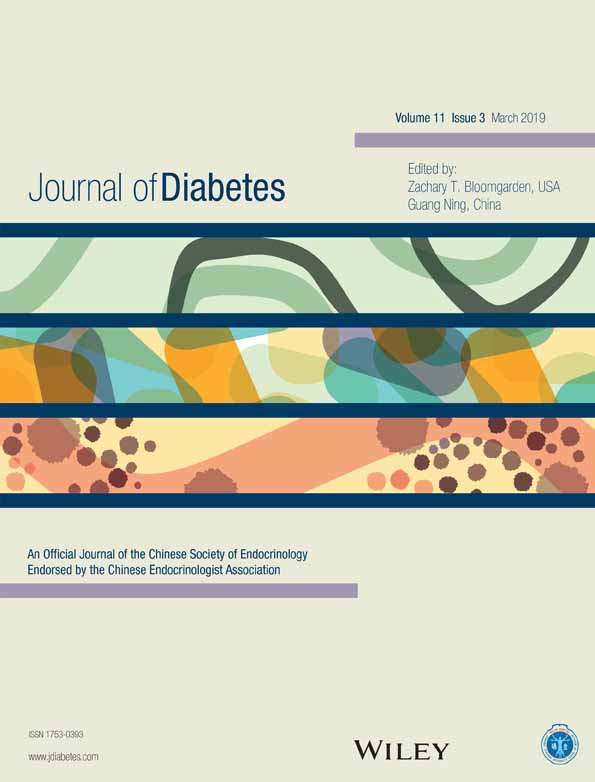Association between cigarette smoking and diabetes mellitus using two different smoking stratifications in 145 040 Korean individuals: Self-reported questionnaire and urine cotinine concentrations
在145040名韩国人群中使用两种不同的吸烟分层方法研究吸烟与糖尿病之间的关系:自我报告的问卷与尿液可替宁浓度之间的关系
Abstract
enBackground
Although previous studies have assessed the relationship between smoking and diabetes using self-reported questionnaires, interpretations may be limited by an underestimation of the actual smoking population. This study evaluated the relationship between smoking and diabetes using both self-reported questionnaires and urine cotinine concentrations.
Methods
The present cross-sectional study enrolled 145 040 Koreans in Kangbuk Samsung Health and Cohort Studies between 2011 and 2013. Urinary cotinine was measured after a 10-hour smoking-free period. Cotinine-verified current smoking was defined as a urinary cotinine concentrations ≥50 ng/mL.
Results
Overall diabetes prevalence in self-reported (4.5% vs 1.6%) and cotinine-verified (4.4% vs 2.1%) current smokers was higher than in self-reported and cotinine-verified never smokers. Multivariate regression analysis showed that cotinine-verified current smoking (odds ratio [OR] 1.25; 95% confidence interval [CI] 1.13-1.38), self-reported former smoking (OR 1.16; 95% CI 1.01-1.33) and current smoking (OR 1.33; 95% CI 1.17-1.50) were associated with increased diabetes compared with cotinine-verified and self-reported never smoking. Unobserved smoking (OR 1.79; 95% CI 1.20, 2.66) also increased the odds for diabetes. There were no significant sex interactions in the analyses.
Conclusions
This study shows that self-reported former and current smoking, cotinine-verified current smoking, and unobserved smoking (i.e. self-reported never smoking with urine cotinine >50 ng/mL) are all associated with increased diabetes prevalence. These findings suggest that cotinine could provide additional information when assessing cardiometabolic risks, such as diabetes.
Abstract
zh摘要
背景
虽然既往已有研究使用自我报告的问卷来评估吸烟与糖尿病之间的关系,但是对实际吸烟人口的低估可能会导致对研究的解读受限。这项研究联合使用自我报告的问卷与尿液中可替宁浓度来评估吸烟与糖尿病之间的关系。
方法
当前这项横断面研究纳入的145040名韩国人来自2011年至2013年间Kangbuk Samsung Health and Cohort研究。在禁烟10小时后测量尿液可替宁。通过检测尿可替宁浓度来查证目前是否在吸烟,阳性定义为≥ 50 ng/mL。
结果
自我报告为目前吸烟患者(糖尿病总患病率为4.5% vs 1.6%)与经可替宁查证为目前吸烟患者(糖尿病总患病率为4.4% vs 2.1%)的患病率要高于自我报告从未吸烟患者与经可替宁查证为从未吸烟患者。多变量回归分析结果表明,经可替宁查证为目前吸烟患者(危险比[OR]为1.25;95%置信区间[CI]为1.13-1.38)、自我报告既往吸烟患者(OR为1.16;95% CI为1.01-1.33)以及自我报告目前吸烟患者(OR为1.33;95% CI为1.17-1.50)的糖尿病患病率与经可替宁查证并且自我报告从未吸烟患者相比显示增加。未观察到的吸烟(OR为1.79;95% CI为1.20, 2.66)也会增加糖尿病的风险。在分析中没有发现性别会造成显著的相互影响。
结论
这项研究表明,自我报告的既往吸烟与目前吸烟、可替宁查证的目前吸烟以及未观察到的吸烟(即自我报告从未吸烟但尿液可替宁> 50 ng/mL)都可导致糖尿病患病率增加。这些研究结果提示在评估心血管代谢风险(如糖尿病)时,测量可替宁可以为我们提供额外的信息。




